Meg Falcone and her five daughters are the six charming shepherdesses behind Five Sisters Farm, located amid the picturesque valleys and forests of Plainfield, New Hampshire. The flock at Five Sisters Farm was established in 2007, when Meg’s eldest daughter wanted to show animals at the local fair. They experimented with both goats and sheep but decided to focus on raising Shetland sheep after a friend introduced them to the breed. Today, the farm is an active participant in the Livestock Conservancy’s Shave ’Em to Save ’Em program, and you can stop by their Instagram @5sistersfarm to view lovely pictures of their sheep. I recently had the opportunity to interview Meg.
Why Shetlands?
Meg: They are small, easy to handle, colorful, kid friendly, and great for clearing land. We started with seven acres that were overgrown and wild, but our Shetlands cleared it to the point where we can easily mow and care for the pastures.
How did your flock start?
Meg: After graduating Cornell as a veterinarian in 1999, I moved to New Hampshire with my husband to start work in a mixed animal practice. I was on call all the time and often found myself helping animals in need in the middle of the night. Over the course of having five daughters and a small flock of Shetland sheep, I made the switch to small animal medicine. I did not grow up on a farm, but I still wanted to raise heritage sheep and participate in the wool arts with my daughters. Our first Shetland was a lamb my daughter acquired from a friend. Years later, I can’t forget how tiny that lamb looked next to giant sheep breeds in the show ring!
Are Shetlands friendly sheep?
Meg: Our flock is ridiculously friendly. Almost like dogs, they have individual personalities. Not only do they look different, they are different. They form an attachment to the person who owns them. They know their names and will come when called. Some like to be petted a certain way, while others follow you around. We maintain a flock of around 30–40 sheep. I love how each one is so unique, sweet, and quirky.
What do you like about Shetland wool?
Meg: The interesting thing about Shetlands is that their fleece changes from year to year. It may not be good for the first shearing, but next year it is just gorgeous. Shetland wool is not scratchy, even though some say it is. I have both dual-coated and single-coated fleeces in my flock and have found that even my older sheep grow very soft fleeces. A single fleece can have so much variation from tip to tail. Other shepherds are breeding for more fleece consistency. But I prefer traditional fleeces where the softest part is the neck wool.
How do you handle your raw fleeces?
Meg: Shetland wool is soft, lustrous, and lofty. To make the most of my fleeces, it’s all about selective skirting and sorting. I pick out only the best parts of a fleece for yarn. I use the rest for other projects, such as felted dyer balls. I thoroughly skirt my fleeces and sort them into different bins for different yarns and to achieve consistency. Most of my fleeces will go to a mill to be turned into roving or yarn, but if there is a fleece I particularly like, I will process it at home into batts with a drum carder.
What about fleece colors?
Meg: The color variations in Shetland sheep fleeces are so much fun to work with. You don’t know what you are getting until you card everything together. I like to look out to our field and see all kinds of colors. I want to promote the diversity of natural colors that my flock produces. Even on one sheep, you will find different patches of color – grays, creams, blacks, and browns. There are endless possibilities in terms of color, especially if I mix them.
What is your favorite fleece color?
Meg: I like all the grays, particularly blue-grays. Our black sheep will change to a blue-gray over time. They are born dark and fade out as they get older. The ram we have now has a blue-gray fleece with spots, so I can’t wait to see what colors our new lambs will be in the future.
Do you spin?
Meg: I like to say that I’m the knitter and animal manager of the family. I don’t currently know how to spin. But four of my five daughters do spin. They learned to spin using wool from their own sheep. My youngest doesn’t spin yet; perhaps I’ll get a chance to learn spinning yarn with her soon. Fun fact, my daughters like to name their sheep after trees and plants; each batch of fiber or yarn produced on the farm is named after the sheep it came from.
What is the most important place on your farm for your sheep?
Meg: They like places where they can see people. If they see you, they will move closer to get a better view. They love attention. In the winter, the girls are in the barn. Our neighbor has a good view of the flock, and the sheep love him. And they make a point of making you feel really guilty if you don’t take a moment to say “hi” to them!
Is there a place you find inspiration to work with your flock and their fleeces?
Meg: Well, I like to spend time just sitting with the sheep. They will gather around me so I can pet them. It is very relaxing and comforting to me. I’m not necessarily getting anything done at the time. I’m picking through their wool, talking to them, and they wag their little tails. When I work with wool, I like to handle it outside on a nice day. I find it addictive to pick vegetable matter out of their fleeces on a sunny day. It is my happy place.
Is there anything else you would like to mention about place?
Meg: Things change throughout the year. In the winter the sheep are near the house. In the summer, they are out on the pasture. In the spring, they are sprawled out by the paddock by our house. When the ewes have their baby lambs snuggling with them, it is so sweet to see. Certain sheep have their favorite places to be and you can always find them there. They may call to you. They might also lie down under a tree and take naps. Sheep have their own sense of place. And as their caretakers, we can enjoy that with them!
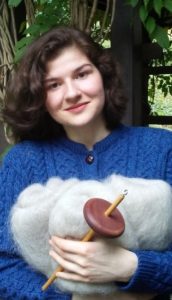 Jacqueline Harp is a freelance writer and multimedia fiber artist who spins, felts, weaves, crochets, and knits in every spare moment possible. She is also a former, certified Master Sorter of Wool Fibers through the State Univ. of N.Y. (Cobleskill) Sorter-Grader-Classer (SGC) Program. Her Instagram handle is @foreverfiberarts.
Jacqueline Harp is a freelance writer and multimedia fiber artist who spins, felts, weaves, crochets, and knits in every spare moment possible. She is also a former, certified Master Sorter of Wool Fibers through the State Univ. of N.Y. (Cobleskill) Sorter-Grader-Classer (SGC) Program. Her Instagram handle is @foreverfiberarts.



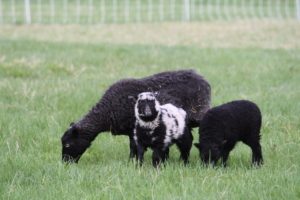
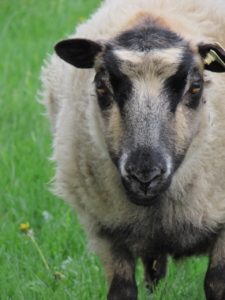
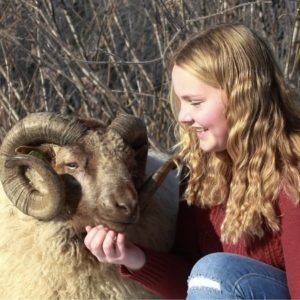


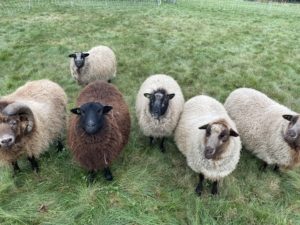



Leave a Reply
Want to join the discussion?Feel free to contribute!